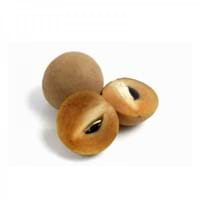Health Benefits
Anti-inflammatory properties, Arthritis treatment, Regulates Blood Sugar, Unknown
Cancer prevention, Diarrhea treatment, Prevents constipation, Scurvy treatment, Treatment of dysentary
General Benefits
Boosts immune system, Controls blood sugar levels, Digestive aid
Controls blood pressure, Cures cough, Improves eye vision, Maintains healthy cholesterol level, Treatment of common cold
Skin Benefits
Nourishes skin, Protects skin from oxidative stress
Anti-aging benefits, Brightens and lightens complexion, Hydrates skin, Treatment of skin diseases
Hair Benefits
Prevents hair loss, Promotes longer and healthier hair, Regulates hair growth
Prevents hair loss
Allergy Symptoms
Asthma, Red rash, Swelling of mouth, tongue or lips
Breathing difficulty, Coughing, Runny nose, Sneezing, Swelling of mouth, tongue or lips, Wheezing
Side Effects
Diarrhoea, Vomiting
Hair thinning, Nail thinning, Skin problems, Tooth decay, Weakness, Possibly unsafe during pregnancy
Best Time to Eat
As a snack in the late afternoon
As a snack in the late afternoon, Don't consume at night and before bed, Eat the fresh ones, avoid mixing with any other foods, don't eat after meal., Morning time (before lunch)
Vitamin B5 (Pantothenic Acid)
Vitamin C (Ascorbic Acid)
Vitamin E (Tocopherole)
Not Available
Vitamin K (Phyllochinone)
Not Available
Lutein+Zeaxanthin
Not Available
Calories in Fresh Fruit with Peel
Calories in Fresh Fruit without Peel
Not Available
Not Available
Calories in Frozen Form
Not Available
Calories in Juice
Not Available
Calories in Jam
Not Available
Calories in Pie
Not Available
Type
Berry
Tree fruit, Tropical
Season
Winter
All seasons
Varieties
Bush Table Queen, Heirloom Table Queen, Festival Hybrid, Early Acorn Hybrid, Table Ace, Ebony and Cream of the Crop
Lucknow 49, Allahabad Safeda, Chittidar, Harijha, Apple guava, Hafshi, Arka Mridula and Allahabad Surkha
Seedless Variety
Not Available
No
Color
Dark green, Green-yellow, Orange green
Green, Pink, Yellow
Inside Color
Not Available
White
Taste
Sweetish
Sweet-Sour
Origin
Central America, North America, Unknown
Central America, Mexico, South America
Soil Type
Well-drained
Loam, Rocky, Sandy
Climatic Conditions
Cold, Sunny
Sunny
Facts about
- It was named as Acorn Squash for its resemblance to a large ribbed acorn.
- It is said that squash was being grown in Mexico as long as 10,000 years ago.
- It was the first food cultivated by native American Indians.
- The black pigment in Guava leaves is used for textile applications.
- Guava leaves are used to make tea.
- Oils extracted from guava seeds are used in various cosmetics.
- Guava wood is used for decorative purposes.
Spirits
Not Available
Yes
Cocktails
Not Available
Yes
Other Countries
Egypt, India, Iran, Italy, Mexico, Russia, Turkey, Ukraine, United States of America
China, Indonesia, Mexico, Nigeria, Pakistan, Philippines, Thailand
Botanical Name
Cucurbita Pepo
Psidium guajava
Synonym
Winter Squash
Not Available
Subkingdom
Tracheobionta
Tracheobionta
Division
Magnoliophyta
Magnoliophyta
Class
Magnoliopsida
Magnoliopsida
Subclass
Dillenhidae
Rosidae
Order
Cucurbitales
Myrtales
Family
Cucurbitaceae
Myrtaceae
Species
Pepo
Psidium guajava
Generic Group
Not Available
Myrtle
Difference Between Sapota and Guava
We might think that Sapota and Guava are similar with respect to nutritional value and health benefits. But the nutrient content of both fruits is different. Sapota and Guava Facts such as their taste, shape, color, and size are also distinct. The difference between Sapota and Guava is explained here.
The amount of calories in 100 gm of fresh Sapota and Guava with peel is 40.00 kcal and 68.00 kcal and the amount of calories without peel is Not Available and Not Available respectively. Thus, Sapota and Guava belong to Low Calorie Fruits and Low Calorie Fruits category.These fruits might or might not differ with respect to their scientific classification. The order of Sapota and Guava is Cucurbitales and Myrtales respectively. Sapota belongs to Cucurbitaceae family and Guava belongs to Myrtaceae family. Sapota belongs to Cucurbita genus of Pepo species and Guava belongs to Psidium genus of Psidium guajava species. Beings plants, both fruits belong to Plantae Kingdom.









